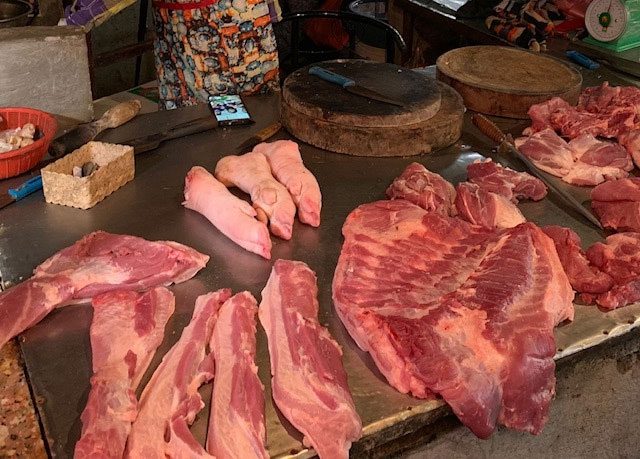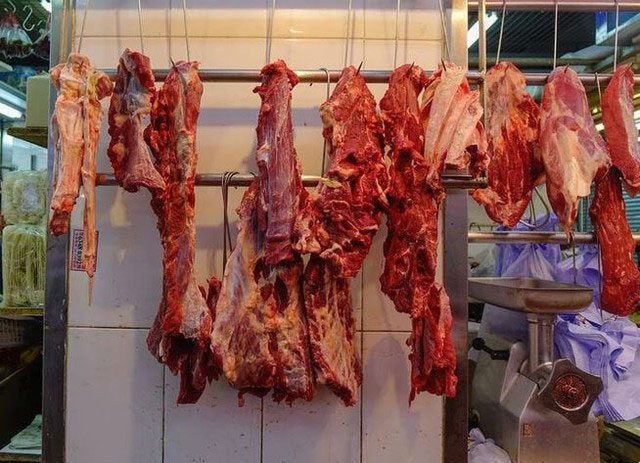Unveiling the Selling Techniques Behind the Arrangement of Beef and Pork.
As consumers stroll through traditional markets, many find themselves intrigued by how vendors arrange their goods. A prime example is the meat stalls, where both pork and beef are commonly sold, yet their display methods differ significantly. Why do meat sellers hang beef high but display pork on the table?

Hanging beef high reveals a hidden art of business.
1. Demand and Sales Speed
In Vietnam, pork is typically more affordable and versatile for various dishes, making it a faster-selling option compared to beef. Consequently, vendors usually display pork on tables for convenient cutting.
Beef is pricier, purchased less frequently, and often sold in larger cuts, so it is hung to save space. Additionally, hanging beef high allows sellers to easily cut, trim excess fat, or remove bones.
2. Easy Storage and Attraction
Pork contains more fat, and if hung high, buyers would see the visible fat, making it less appealing. Therefore, pork is usually placed on the table.
Beef, having little fat, benefits from being hung as it allows for ventilation and keeps the meat dry. Moreover, markets can be humid and filled with bacteria, so hanging beef helps maintain its freshness until the end of the selling period.

Pork is always consumed faster than beef.
3. Differentiation and Showcasing Quality
Hanging beef or even an entire beef leg high makes it easier for buyers to choose, as it is more visually accessible; customers can select the exact cut they want after careful inspection.
Vendors cleverly “show off” the quality of fresh meat by hanging beef high, ensuring customers that it hasn’t been water-injected, which builds trust.
Additionally, experts suggest that hanging beef can make the muscle fibers softer and more elastic. The meat becomes tender and easier to chew after cooking.
This display method has become an “unwritten rule” in local markets; customers passing by hanging meat stalls can easily identify that stall as selling beef rather than pork, making it visible from afar.

When entering the market, stalls with hanging meat are likely beef stalls.
Each vendor has unique experiences and methods for displaying their goods, tailored to their business conditions and local regulations. These practices contribute to the richness and diversity of the selling culture in traditional markets, reflecting the creativity and adaptability of sellers in meeting consumer demands.
Nevertheless, choosing the right food should still be based on quality and food safety criteria rather than solely relying on appearance and presentation to make decisions.


















































